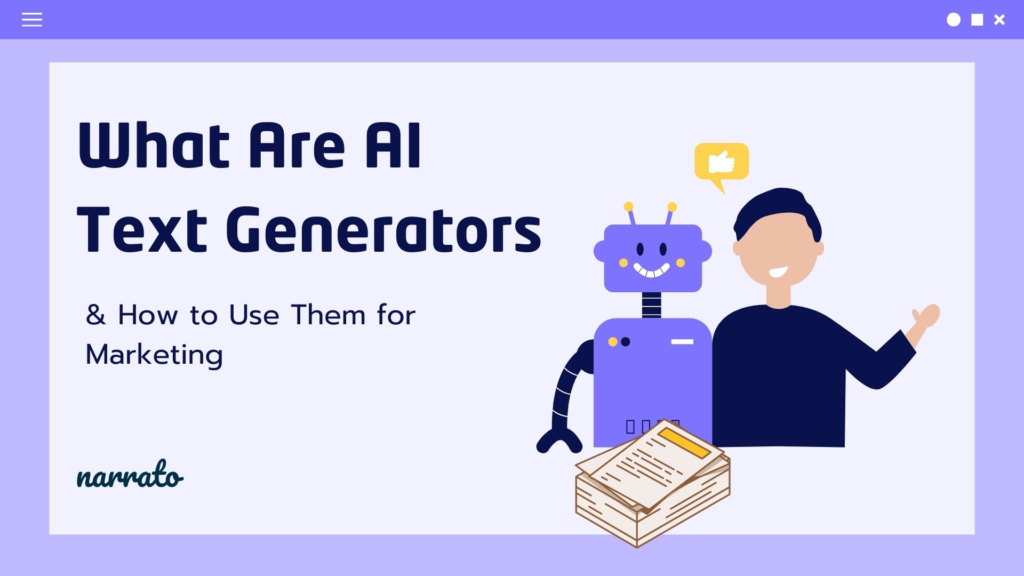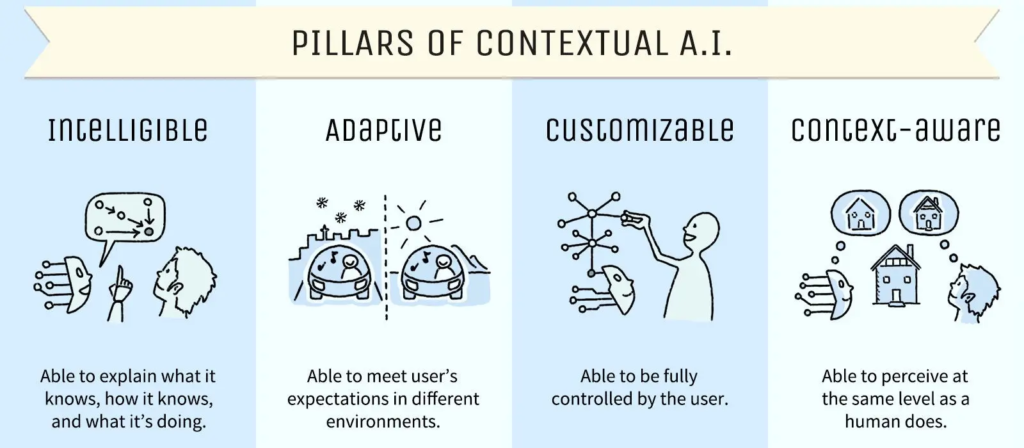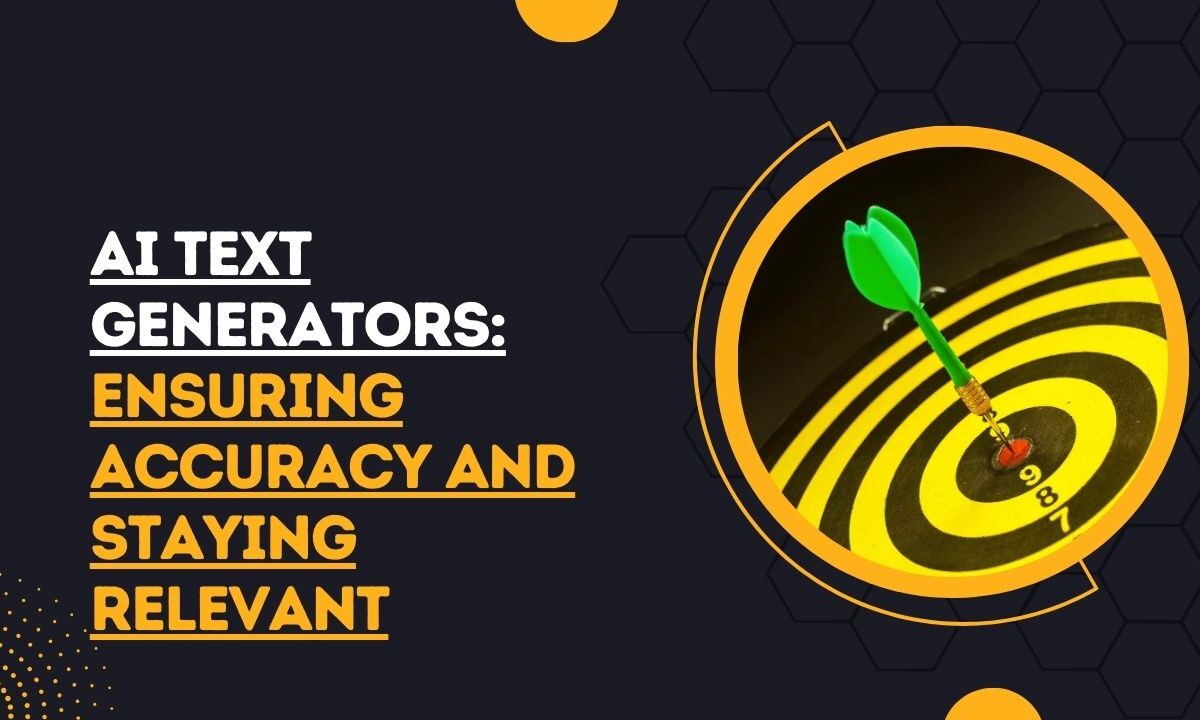AI Text Generators: Ensuring Accuracy and Staying Relevant
Are AI text generators truly as accurate and relevant as we need them to be? AI text generators’ accuracy and relevance is a critical issue, especially as these tools are increasingly integrated into daily tasks.
Dr. Fei-Fei Li, AI Researcher says, “accuracy in AI-generated text is essential to ensure that content aligns with real-world knowledge and context, not just syntax.”
The fact is Inaccurate outputs can lead to costly mistakes, whether in marketing, healthcare, or customer service.
This article explores how AI models ensure precision and stay aligned with current trends, so you can make smarter choices.
Ready to dive into the mechanics behind their reliability?
Keep reading for insights that could transform your understanding of AI-powered content generation.
AI Text Generators Accuracy and Relevance: The Basics
How AI Text Generators Work
At their core, AI text generators rely on complex algorithms trained to understand language patterns.
Models like GPT (Generative Pre-trained Transformer) analyze billions of sentences to predict and generate coherent responses.

Image Source: Narrato.io
They excel at mimicking human writing, making them incredibly versatile.
Common Applications in Everyday Life
From drafting emails to creating SEO-friendly articles, AI text generators are everywhere.
They assist in customer support, content creation, translation, and even medical research.
The possibilities are virtually limitless.
The Importance of Accuracy: AI Text Generators
Challenges in Maintaining Accuracy
AI tools can occasionally produce incorrect or nonsensical results.
Why?
Because they lack genuine understanding and depend heavily on their training data. If that data is flawed, so are the outputs.
This is why AI text generators’ accuracy and relevance matters so much.
The Importance of Continuous Learning
AI models need regular updates and retraining to maintain accuracy and relevance of AI text generators.
Without exposure to new data or advancements, they risk becoming obsolete, producing outdated or erroneous results.
Continuous learning ensures AI remains adaptable, precise, and capable of understanding evolving contexts and trends.
User Prompts and Instructions
The clarity of user input directly impacts accuracy of AI text generators.
Vague or poorly structured prompts often lead to irrelevant or confusing outputs.
Providing clear, detailed instructions helps AI generate more relevant and precise content, improving its effectiveness and reliability in various applications.
Real-World Impacts of Inaccurate AI Outputs
Imagine a legal document riddled with errors or a healthcare recommendation gone wrong.
Accuracy isn’t just a luxury—it’s a necessity.
Inaccurate content can erode trust and lead to serious consequences.
The Role of Context
AI struggles with nuance, often missing the subtleties of context.

Image Source: Business Adobe.com
For instance, the word “bank” could refer to a financial institution or the side of a river.
Without context, AI guesses—and not always correctly.
Training Data Quality
The old adage “garbage in, garbage out” holds true.
If the training data is biased, outdated, or low-quality, the AI’s output will reflect those flaws.
Curating diverse, high-quality datasets is crucial for accuracy.
Accuracy Factors of AI Text Generators
| Topic | Significance | Challenges |
|---|---|---|
| The Importance of Accuracy in AI Text Generation | AI tools rely on accurate data and algorithms for relevant, precise text. Inaccurate outputs can lead to misunderstandings in fields like healthcare or law. | Flawed training data, lack of understanding, and limited context lead to incorrect results. Accuracy requires continuous model and data refinement. |
| The Importance of Continuous Learning | AI models need regular updates to stay relevant and adapt to evolving contexts and trends. Without continuous learning, models become outdated. | Without new data or insights, AI becomes obsolete and less accurate. Continuous learning is necessary for adaptability and reliability. (hyperspace.mv) |
| User Prompts and Instructions | Clear and precise instructions improve AI’s ability to stay on topic and generate accurate content. | Vague prompts confuse AI, leading to irrelevant or inaccurate outputs. Clear input is key for better results. |
| Real-World Impacts of Inaccurate AI Outputs | Inaccurate AI outputs, such as errors in legal or medical fields, can have serious consequences. Accuracy is critical to prevent harm and maintain trust. | Errors in sensitive fields can lead to legal, financial, or health risks, eroding trust in AI technology. |
| The Role of Context | AI struggles with nuance and context. Words with multiple meanings, like “bank,” can confuse models without proper context. | AI may misinterpret ambiguous terms without sufficient context, leading to incorrect results. |
| Training Data Quality | High-quality, diverse data is crucial for accurate AI outputs. Poor data leads to flawed or biased results. | Low-quality or biased data negatively affects AI’s accuracy. Proper data curation is essential. |
Staying Relevant in a Rapidly Evolving World
Adapting AI Models to Changing Trends
Language evolves, and so should AI.
Slang, cultural references, and new terminologies emerge constantly.
Regular updates to AI models ensure they stay in sync with societal changes.
Keeping Up with New Research
AI models need to be constantly updated with the latest academic and industry research to stay on the cutting edge.
By integrating advancements in AI technology, the model can adapt to better solve complex problems.
Incorporating Latest Techniques:
New research often introduces improved methods or optimizations.
Staying up-to-date ensures models use the best available algorithms.
Addressing Emerging Challenges:
As new issues and challenges arise in AI, integrating recent research allows the model to tackle them effectively.
Improving Efficiency:
Research advancements often bring efficiency improvements, such as faster processing or reduced resource consumption, making AI tools more effective and scalable.
User Feedback Integration
User feedback is essential for AI to stay relevant.
By listening to user experiences and needs, AI models can refine their responses and functionalities to better serve their intended audience.
Customizing Responses:
Collecting feedback helps AI models fine-tune their behavior to address specific user concerns and preferences.
Identifying Gaps in Knowledge:
User input can highlight areas where the AI might be lacking, allowing for targeted improvements.
Enhancing User Experience:
Regularly updating AI systems based on feedback leads to a more intuitive, user-friendly interface, fostering satisfaction and trust.
Evolving Industry Standards AI Text Generators
As industries evolve, so do their standards and regulations.
AI models must stay aligned with these changes to remain effective and compliant, ensuring they meet the current needs of various sectors.
Adapting to Legal Requirements:
In industries like healthcare and finance, AI must adjust to shifting laws, such as data privacy regulations and compliance standards.
Aligning with Best Practices:
Integrating new industry standards allows AI tools to incorporate best practices, ensuring they provide reliable and trustworthy results.
Staying Competitive:
By aligning with industry trends and standards, AI models maintain relevance, ensuring businesses can stay ahead of competitors who are also adopting cutting-edge technologies.
Handling Bias and Diversity
Bias in AI can perpetuate stereotypes or exclude certain perspectives.
Addressing this requires a conscious effort in training data selection and model refinement.
Promoting diversity helps AI cater to a broader audience.
Multilingual Capabilities
AI isn’t just for English speakers. Multilingual models are expanding its reach, making it accessible globally.
However, ensuring accurate translations and cultural sensitivity remains a challenge.
Tools and Techniques for Improved Accuracy
Natural Language Processing (NLP) Advances
NLP technologies are evolving, allowing AI to better understand and interpret human language.
From sentiment analysis to entity recognition, these advancements drive greater precision.
User Feedback for AI Text Generators’ Accuracy
No one knows what’s right better than the end user.
Incorporating feedback loops allows AI to learn from mistakes and continually improve.
Human-AI Collaboration
While AI is powerful, human oversight ensures quality.
Think of AI as a sous chef: it can prepare the meal, but the head chef (a human) needs to taste it before serving.
Best Practices for Combining Human Expertise with AI
- Always review AI-generated content.
- Use AI as a complement, not a replacement.
- Train teams to understand AI’s capabilities and limitations.
Future of Accuracy and Relevance of AI Text Generators
Innovations on the Horizon
Expect AI to become even more context-aware and emotionally intelligent.
Emerging technologies aim to make AI not just smarter but also more empathetic.
Ethical Considerations
With great power comes great responsibility.
Ethical questions around data privacy, misinformation, and transparency need addressing as AI grows more sophisticated.
FAQs
How do AI text generators handle sarcasm or humor?
AI often struggles with subtle tones like sarcasm and humor due to their contextual nature. Improved NLP models are working to bridge this gap.
What steps can users take to verify AI-generated content?
Always cross-check information, use plagiarism tools, and ensure the content aligns with reliable sources.
Can AI text generators truly eliminate bias?
While efforts are ongoing, eliminating bias completely is challenging. Regular audits and diverse training datasets help mitigate it.
What industries benefit most from AI text generators?
Industries like marketing, healthcare, education, and customer service are leveraging AI for efficiency and innovation.
How can beginners start using AI text tools effectively?
Start with free tools, learn their features, and practice refining outputs through prompts and edits.
Related Posts
Ethics and Limits of AI Text Generators: What You Need to Know
The Future of AI Text Generation: Transforming Writing and Beyond
Write Faster, Smarter: AI Text Generators for Everyday Use
How AI Content Earns Our Trust One Step at a Time
Conclusion
AI text generators have revolutionized content creation and communication.
However, ensuring accuracy and staying relevant are ongoing challenges.
By leveraging better training data, incorporating user feedback, and embracing collaboration, we can harness AI’s full potential responsibly.

